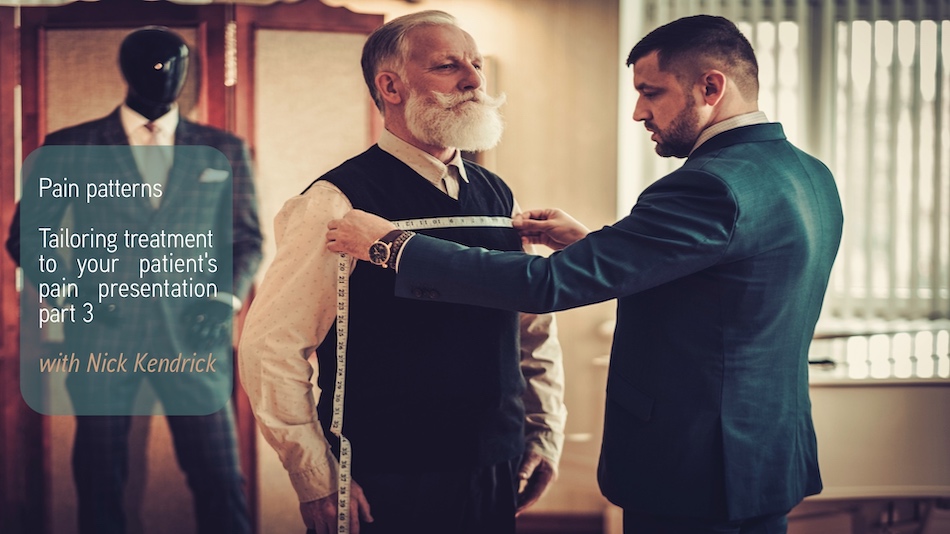Identifying your patients source of nociception and pain, such as a tendon, joint, bone or other structure is often one of the goals of our assessment, and helps guide treatment. Going a step further and addressing their pain type allows you to further target your treatment approach.
In “Pain patterns - How to differentiate causes of pain & tailor treatment part 1 with Nick Kendrick” (APA Titled Musculoskeletal & Sports Physio) you identified & diagnosed common low back, bone and tendon pain presentations. In part 2 you diagnosed four different types of headache, plus red flags, inflammatory pain, visceral referral, and vascular pain that are important to keep in mind with all patients.
When you’ve diagnosed a musculoskeletal source of your patients pain, how can you target your treatment? We have a new video for you today to help with this.
Now available - Pain patterns 3 - Tailoring treatment to patient’s pain presentation with Nick Kendrick
In part 3 in this three part series, you’ll discover:
- What treatment is likely to be useful in different pain presentations, and how can you tailor your treatment to get the best results?
- When is manual therapy likely to be effective or ineffective?
- How to alter your treatment and education when your patient has a four week history of resolving, atraumatic low back pain, compared to a four month or four year history of recurring or persistent pain.
- How to perform SIJ tests in low back pain patients.
- How to use likelihood ratios to identify whether your patient is likely to have specific diagnoses or red flags.
- Shoulder pain differential diagnoses & red flags you need to keep in mind.
Login now and learn how to tailor your treatment and education to your patient’s pain presentation.
CLICK HERE to improve your assessment & diagnostic skills with a free trial Clinical Edge membership

